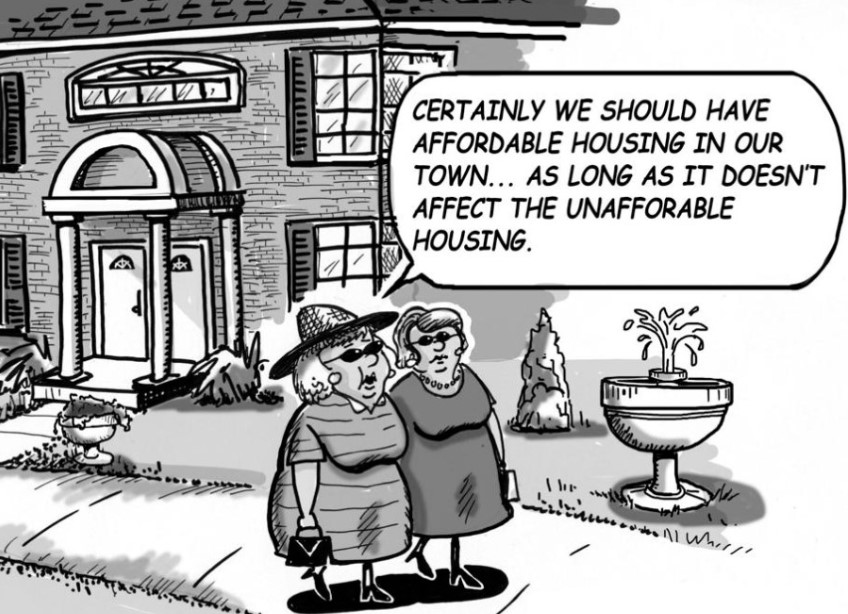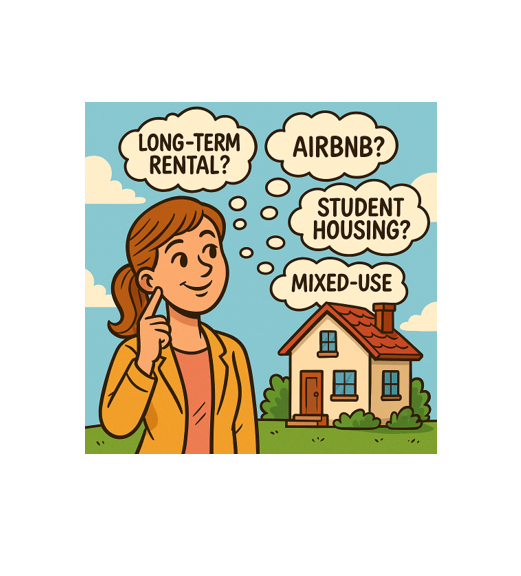NIMBY
“Contrary to the vision of the left, it was the free market which produced affordable housing—before government intervention made housing unaffordable.” Dr. Thomas Sowell
Home ownership has long been considered the American Dream. However, since 2020 U.S. home prices have risen 34%, and mortgage rates surged from 3.72% to 6.89%; an 85% increase. Put the two together and the average homebuyer is paying 91% more for their mortgage than they did just four years ago. Not surprisingly, home affordability has fallen 37% since July 2020 and is at the lowest level since the Atlanta Fed began tracking it.
The push for “affordable housing” has been growing over the years, and for good reason; home ownership is less affordable today than at any time since the index was started twenty-four years ago. The solution universally demanded by progressives is more public housing. The argument is a Keynesian one; “The market isn’t meeting demand, therefore, Uncle Sam must fix it.” But is that the right answer? Let’s look at the challenges facing a government solution to the housing issue.
First, public agencies aren’t real estate developers and lack the expertise and competence to build housing projects efficiently. If there’s any doubt as to whether the government can compete with the private sector, consider the U.S. Postal Service and UPS. In 2022 the Postal Service lost $6.5 billion, whereas UPS boasted a net income of over $11 billion. Another example would be California’s High Speed Rail project, which was approved in 2008, projected to cost $35 billion, and begin operation by 2020. The Golden State now expects the rail to begin operation by 2033, 13-years later than originally forecast, and with a cost overrun of $100B. By contrast, Union Pacific nets over $6 billion per year.
Second, where does the government get the money? While the private sector is awash in cash eagerly seeking a worthy return, the government doesn’t have any money; only the power to tax and borrow. This is true at the state and local levels, but especially so for the federal government, which is currently carrying $35 trillion in debt and paying nearly $1 trillion annually in net interest, which equals 18% of all federal tax revenue. That number increases to 23% in ten years, by the way.
Lastly, local building restrictions prevent most housing projects from ever getting off the ground as they are either impossible to get approved or the cost simply doesn’t pencil out. Developers face a variety of challenges, such as zoning restrictions, which curtail density, housing type, and height limits. Additionally, setback rules, onerous infrastructure requirements, impact fees, inspection costs, and oftentimes a lengthy and pricey permitting process further exacerbate the problem. And while local residents almost unanimously espouse their support of “low-cost housing,” it’s always and everywhere accompanied by the one exception; just not in my backyard.
Low-cost public housing is an illusion created by progressive bureaucrats, special interest groups, and proponents of big government. Bureaucrats use various tricks to accomplish the illusion, such as pleasant-sounding terms, catch phrases, and government accounting sleight of hand. It only appears to be low-cost to the buyer/renter because someone else is writing the check. Government subsidies, tax credits, donation of public land, municipal bonds, and special grants all serve to make the actual cost appear lower, but make no mistake; the cost is always and everywhere higher than the market price, and therefore, the value.
Until we come to understand that price is simply a function of supply and demand, the siren song of government intervention will always sound enticing. But, if you want to reduce the cost of anything, simply increase the supply. This is classical economics 101, that, prior to Keynes, was universally understood.
Which begs the question, how can housing be made more affordable? The answer is simple; eliminate the barriers preventing developers from doing what they do best; produce more housing. No special funding is required, no municipal bonds, no land donations, no subsidies. Just simplify the process and ease zoning restrictions that make it difficult and costly, if not impossible, for developers to build a project. This isn’t to say there shouldn’t be proper city planning and zoning enforcement. There absolutely should. But when city governments and local neighborhoods use lawfare to stifle development, then the private sector will bow out, and the only solution left is a government one; which is always more costly, less efficient, and less desirable.
Mark Lazar, MBA
CERTIFIED FINANCIAL PLANNER™
pathwaytoprosperity.com









